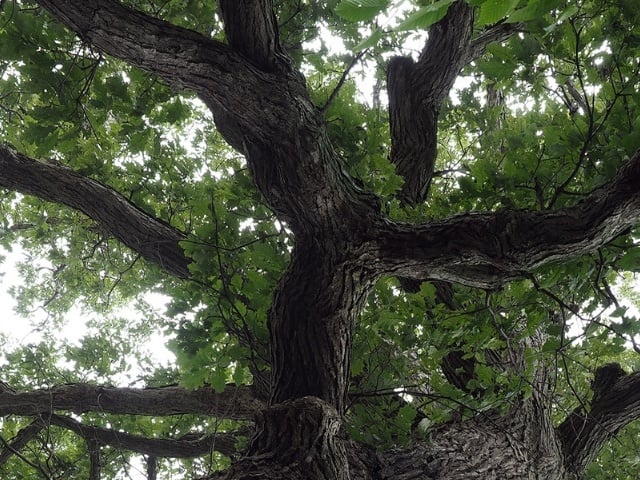Published: March 17, 2025

One of the cornerstones of Kendal at Oberlin is its inviting natural environment. The campus encompasses The John Bartram Arboretum, with over 100 acres of diverse habitat, more than 1,100 trees and eight ponds. With the grounds now accredited as a Level II arboretum by ArbNet and ongoing resident-driven efforts, Kendal can offer even more enhancement and educational opportunities.
Discover the History of The John Bartram Arboretum
The John Bartram Arboretum at Kendal at Oberlin is named after a Pennsylvania Quaker and botanist from the 1700s. The Arboretum Subcommittee of the KORA Horticulture Committee often begins its educational outreach by discussing its namesake.
A friend of Benjamin Franklin and other founding fathers, John Bartram, collected specimens and seeds native to North America, which he distributed along the east coast and shipped overseas to Europe. He is considered the first American-born botanist.
Bartram’s introduction of the American Tulip Tree (Liriodendron tulipifera) in Europe created a sensation when it was first seen. This inspired us to designate the Tulip Tree as the signature tree of the arboretum.
An Integral Part of Kendal at Oberlin’s Green Infrastructure
The John Bartram Arboretum is an integral component of Kendal at Oberlin’s green infrastructure. The Arboretum is managed primarily by the Grounds Department of Kendal at Oberlin’s Facility Services with guidance and assistance from the Arboretum Committee of the Kendal at Oberlin Residents Association.
We have a full-time certified arborist and Curator who manages most of the day-to-day aspects of our collection. The residents who first envisioned the arboretum saw our more than 1,000 trees and 100 acres as an opportunity to enhance the lives of Kendal residents by creating a sustainable ecosystem for enjoying nature’s beauty, exercising, watching birds, and, of course, planting and fostering the growth and appreciation of trees.
Much has been accomplished since The John Bartram Arboretum achieved Level 1 accreditation from ArbNet, an international network of arboreta and other tree-focused institutions founded by the Morton Arboretum in Illinois. Of the nearly 2000 certified arboreta listed on the register, Kendal’s is the only one named for John Bartram. It is the only arboretum in Northeast Ohio to be located in a retirement community.
Reaching Major Milestones: Level II Accreditation
The John Bartram Arboretum earned a Level II accreditation in 2022, joining over 200 other arboreta worldwide with such a designation. The arboretum reached this significant milestone with approximately 136 species and 184 genotypes, or types of trees. The Level II accreditation took over two years of hard work, including increasing the collections’ biodiversity, creating a Collections Policy to guide growth, implementing staff managers, and launching a robust increase in educational programming. In fact, annual Arbor Day festivities offer a packed calendar of walks, talks, and special events.
Reaping the Benefits of an Arboretum
The arboretum at Kendal at Oberlin is a healthy urban forest that provides ecological resources for birds and other wildlife, a shade canopy, and energy savings. The grounds also offer a tranquil setting for residents, staff, and visitors to enjoy. The John Bartram Arboretum serves as a living tree museum with numerous opportunities for outreach, education, and engagement.
Contact Kendal at Oberlin to Learn More
Are you interested in learning more about this collaborative, innovative project at Kendal at Oberlin? Learn more about The John Bartram Arboretum and other projects by the community-minded residents of Kendal at Oberlin by contacting us for a brochure, tour, or more information.
This blog was originally published in August 2017 and was updated in March 2025.





